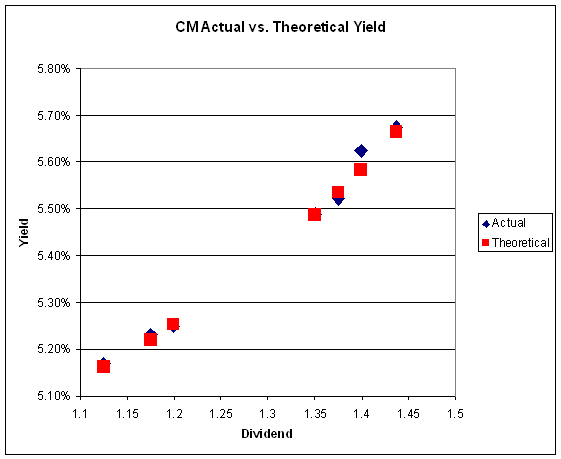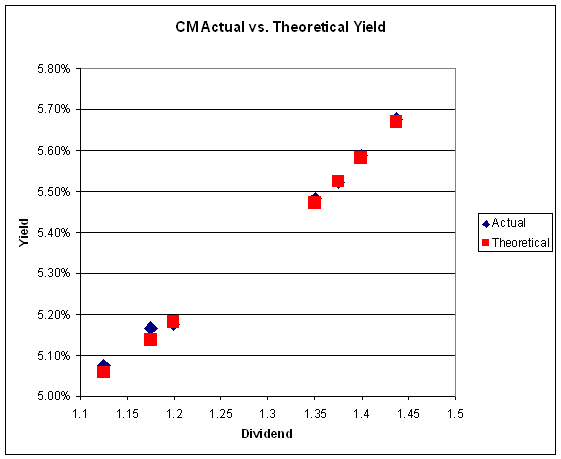RioCan Real Estate Investment Trust has announced:
that it has reached agreements to issue to the public on a bought deal basis, subject to regulatory approval, 4 million Cumulative Rate Reset Preferred Trust Units, Series A (the “Series A Units”) at a price of $25 per unit for aggregate gross proceeds of $100 million, and $175 million principal amount of Series O senior unsecured debentures (the “Debentures”).
The Series A Units are being issued by a syndicate of underwriters co-led by RBC Capital Markets, Macquarie Capital Markets Canada Ltd. and Scotia Capital. The Series A Units will pay fixed cumulative distributions of $1.3125 per unit per annum, yielding 5.25% per annum, payable on the last day of March, June, September and December of each year, as and when declared by the board of trustees of RioCan, for the initial five-year period ending March 31, 2016. The first quarterly distribution, if declared, shall be payable on March 31, 2011 and shall be $0.2301 per unit, based on the anticipated closing of the Series A Units of January 26, 2011. The distribution rate will be reset on March 31, 2016 and every five years thereafter at a rate equal to the sum of the then five-year Government of Canada bond yield and 2.62%. The Series A Units are redeemable by RioCan, at its option, on March 31, 2016 and on March 31 of every fifth year thereafter.
Holders of Series A Units will have the right to reclassify all or any part of their units as Cumulative Floating Rate Preferred Trust Units, Series B (the “Series B Units”), subject to certain conditions, on March 31, 2016 and on March 31 of every fifth year thereafter. Such reclassification privilege may be subject to certain tax considerations (to be disclosed in the prospectus supplement). Holders of Series B Units will be entitled to receive a cumulative quarterly floating distribution at a rate equal to the sum of the then 90-day Government of Canada Treasury Bill yield plus 2.62%, as and when declared by the board of trustees of RioCan.
DBRS Limited (“DBRS”) has assigned a preliminary rating of Pfd-3 (High) for the Series A Units. It is a condition of closing that Standard & Poor’s, a division of the McGraw Hill Companies, Inc. (“S&P”) assign a rating of P-3 (High) for the Series A Units.
RioCan has granted the underwriters an over-allotment option exercisable in whole or in part at any time up to 30 days after closing, to purchase up to an additional 1 million Series A Units at the issue price which, if fully exercised, would result in additional gross proceeds of $25 million.
The Debentures are being issued by a syndicate of underwriters co-led by RBC Capital Markets, CIBC and TD Securities. The Debentures will carry a coupon rate of 4.499% and will mature on January 21, 2016. RioCan has granted the underwriters an option, exercisable at any time up to 48 hours prior to the closing of the Debenture offering, to purchase a further $25 million principal amount of Debentures at the same terms as set forth above.
RioCan will use a portion the proceeds from these offerings to redeem its $180 million 8.33% Series L senior unsecured debentures due April 3, 2014 and the balance for general trust purposes.
The offerings are being made under RioCan’s amended and restated base shelf prospectus dated December 21, 2010. The terms of each of the offerings will be described in prospectus supplements to be filed with Canadian securities regulators. The offering of Series A Units is expected to close on or about January 26, 2011. The Debenture offering is expected to close on or about January 21, 2011.
The debenture issue was later upsized to $225-million.
I believe that this is an interest-bearing issue, although I have not yet seen that spelt out in so many years. I’ll confirm when I see the final prospectus.
Update, 2011-1-19: S&P rates it P-3(high).
Update, 2011-1-20: TIM KILADZE of the Globe & Mail reports:
In RioCan’s case, distributions will be taxed as income, not as dividends. That matters, because income is taxed at a higher rate. But the preferred units will be treated just like RioCan’s regular trust units, so a portion of the distributions will be treated as a return of capital. REITs often distribute more than their net incomes because depreciation skews their bottom lines (property values usually go up, not down), and the amount overpaid allows investors to get a better tax treatment.

